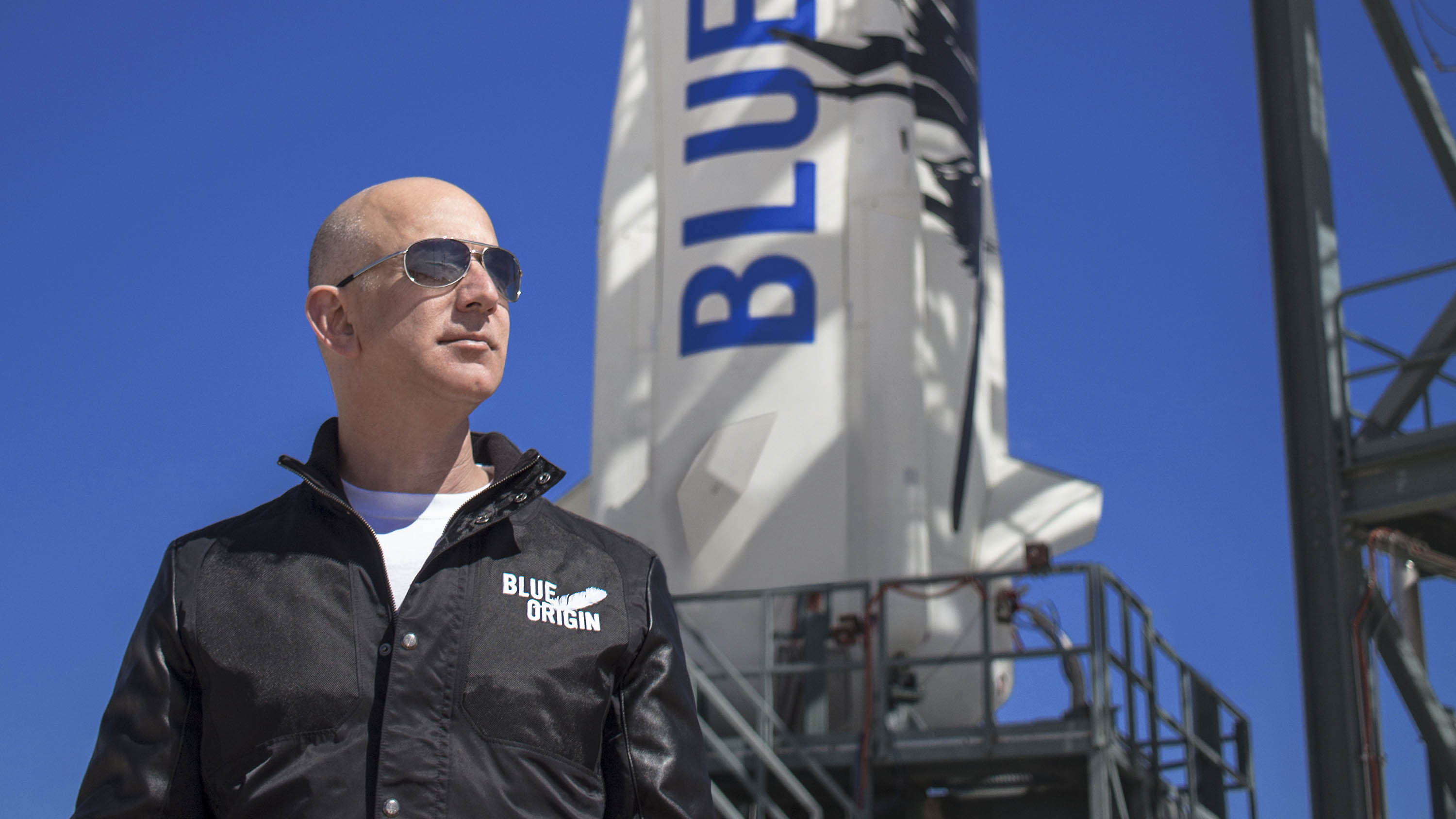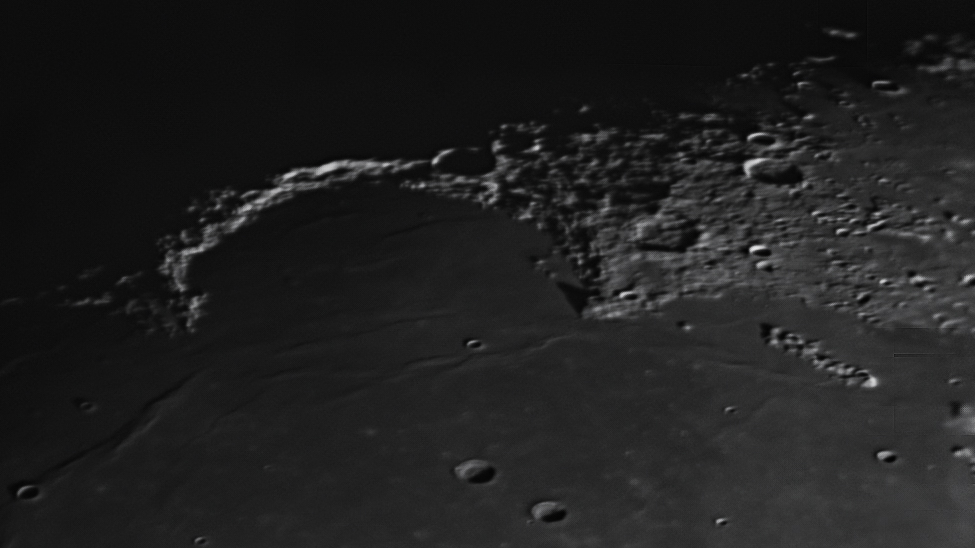
For Blue Origin, this coming moment has been more than two decades in the making.
The spaceflight company founded by billionaire Jeff Bezos is set to launch its first crewed mission on Tuesday (July 20), which will send the billionaire and three other people to suborbital space aboard a reusable rocket-capsule combo called New Shepard. Liftoff is set for 9 a.m. EDT (1300 GMT) from Blue Origin's Launch Site One near Van Horn, Texas.
The flight is a huge milestone for Blue Origin, which Bezos founded back in September 2000. It will mark the company's official entry into the suborbital space tourism business, because among New Shepard's four passengers is its first paying customer, an 18-year-old Dutch man named Oliver Daeman.
Tuesday will also be a very big day for Bezos himself, and not just for professional reasons. The world's richest person has repeatedly said that traveling to space is a nearly lifelong dream, one inspired when he watched the Apollo 11 moon landing in 1969 at the age of five. And his own flight is a sort of tribute to that epic mission, for it's launching 52 years to the day that Neil Armstrong and Buzz Aldrin took humanity's first-ever steps on a world beyond Earth.
Related: How to watch Blue Origin launch Jeff Bezos into space on July 20
Live updates: Blue Origin's first astronaut launch updates
New Shepard takes flight
Blue Origin operated very much under the radar for years after its founding. The company really came into the public eye only in 2010, when it won a development contract from NASA's Commercial Crew Program.
Blue Origin secured another such deal a year later, but NASA ultimately chose SpaceX and Boeing to fly agency astronauts to and from the International Space Station. (SpaceX is in the middle of its third crewed mission to the orbiting lab; Boeing is gearing up for a key uncrewed test flight of its CST-100 Starliner capsule to the station on July 30.)
Breaking space news, the latest updates on rocket launches, skywatching events and more!
The company made more news in October 2012 with a successful pad-abort test of New Shepard in West Texas. The crew capsule fired its escape motor and zoomed away from a rocket simulator, showcasing tech that could help keep passengers safe in the event of an emergency during launch.
Related: Blue Origin's launch with Jeff Bezos: Everything you need to know
Then, in April 2015, New Shepard took flight in earnest for the first time. The capsule reached a maximum altitude of 58.1 miles (93.5 kilometers) — higher than the 50-mile (80 km) line that NASA and the U.S. military recognize as the boundary of space — and came back down to Earth safely under parachutes. The rocket didn't fare quite so well, crashing during its landing attempt.
Seven months later, the next iteration of New Shepard flew even higher, getting about 62.5 miles (100.6 km) above the West Texas scrublands. And this time, both the capsule and the rocket aced their landings — a major milestone, and one that inspired some competitive back-and-forth between Bezos and SpaceX chief Elon Musk. (SpaceX managed to land the first stage of its orbital Falcon 9 rocket just weeks later, a feat Musk's company has repeated dozens of times since.)
In January 2016, the same New Shepard vehicle flew to suborbital space again, in another landmark reusability moment.
And the test flights continued. To date, four New Shepard vehicles have launched on 15 suborbital missions, the last 14 of which have been completely successful. That string of success has convinced Bezos and the rest of the Blue Origin team that New Shepard is ready to start carrying people — and that Bezos should be among the first to fly.
Billionaires lift off
Blue Origin announced in early May that New Shepard's first crewed mission would lift off on July 20, and that the company would auction off one of the seats. (In another nod to history, the announcement came on May 5, the 60th anniversary of the first American human spaceflight, the suborbital jaunt of NASA astronaut and New Shepard namesake Alan Shepard.)
A month later, Bezos revealed that he and his brother Mark will be on the flight — news that significantly juiced the auction, which was won by a still-unnamed bidder for $28 million. (That bidder later pulled out of the flight due to scheduling conflicts, according to Blue Origin; his or her spot was taken by Daemen.)
Related: Meet the crew launching on Blue Origin's 1st astronaut flight on July 20
Then, on July 1, Blue Origin announced that trailblazing aviator Wally Funk will be on the flight as well. The 82-year-old is one of the "Mercury 13," women who passed the same physiological screening tests that NASA put its astronauts through in the early days of the space age. None of those women were seriously considered as astronaut candidates at the time; American human spaceflight was a male-only affair until 1983, when Sally Ride launched to orbit aboard the space shuttle Challenger.
Funk will become the oldest person ever to reach space when New Shepard lifts off on July 20, breaking the record set by then-77-year-old John Glenn during a space shuttle mission October 1998. And Daeman will set a record as well, becoming the youngest-ever spaceflyer.
The same day that Blue Origin announced Funk's involvement, the company's main rival in the suborbital space tourism business, Virgin Galactic, came out with a bombshell of its own: It planned to launch its first fully crewed spaceflight on July 11, and billionaire Virgin Group founder Richard Branson would be on board.
This news — and the actual flight, which went well — stole some of Bezos's thunder. But now it's Blue Origin's turn in the spotlight.
Related: The most extreme human spaceflight records
Big plans
If all goes according to plan on Tuesday, New Shepard could start full commercial operations in the coming weeks or months. Virgin Galactic aims to do the same in early 2022, after a few more test flights, so a bona fide suborbital space tourism industry may be about to get the ground at long last. (Virgin Galactic was founded in 2004.)
But Blue Origin's ambitions extend far beyond suborbital space. The company is also developing a huge reusable rocket called New Glenn to carry people and payloads to Earth orbit, with a debut flight expected in 2022.
Blue Origin is working on a moon lander as well, and it leads "The National Team," a private consortium that proposed a human landing system for use by NASA's Artemis program of lunar exploration. In April of this year, NASA chose SpaceX's Starship as the Artemis crewed lander, but The National Team and another finalist that was not selected, Dynetics, filed protests with the U.S. Government Accountability Office, which is expected to issue a decision on the matter in early August.
Blue Origin's long-term goals are even bolder. The company aims to help humanity become a truly spacefaring species, and to protect our home planet in the process.
"Blue Origin was founded by Jeff Bezos with the vision of enabling a future where millions of people are living and working in space to benefit Earth," the company's vision statement reads, in part. "In order to preserve Earth, Blue Origin believes that humanity will need to expand, explore, find new energy and material resources, and move industries that stress Earth into space."
Mike Wall is the author of "Out There" (Grand Central Publishing, 2018; illustrated by Karl Tate), a book about the search for alien life. Follow him on Twitter @michaeldwall. Follow us on Twitter @Spacedotcom or Facebook.
Join our Space Forums to keep talking space on the latest missions, night sky and more! And if you have a news tip, correction or comment, let us know at: community@space.com.

Michael Wall is a Senior Space Writer with Space.com and joined the team in 2010. He primarily covers exoplanets, spaceflight and military space, but has been known to dabble in the space art beat. His book about the search for alien life, "Out There," was published on Nov. 13, 2018. Before becoming a science writer, Michael worked as a herpetologist and wildlife biologist. He has a Ph.D. in evolutionary biology from the University of Sydney, Australia, a bachelor's degree from the University of Arizona, and a graduate certificate in science writing from the University of California, Santa Cruz. To find out what his latest project is, you can follow Michael on Twitter.
